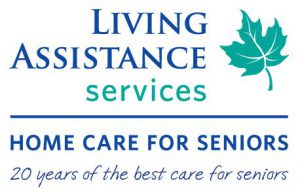Is a Younger Life Worth More Than an
Older Life? — Part Two

- Brian Porter
Governments and financial institutions, such as insurance companies, assess the value of a human life differently, often in financial terms.
Jennifer, a Nurse I know in a south Florida hospital, like many health care providers, especially in the US, has been facing acute moral distress during the Covid-19 pandemic. At her hospital in Florida, her Intensive Care Unit was at full capacity with so many Covid 19 patients and there were no more ventilators to keep any more patients alive. Her team and she now faced the most difficult decision ever; who, amongst the new, serious Covid patients, would be allocated a ventilator and the chance to live longer and how could the team decide this?
US California Gov. Gavin Newsom advised hospitals to prioritize younger people with greater life expectancy for care during the coronavirus outbreak. The argument in principle is that age—that is, years lived so far and years to be lived–should be the determining factor for Jennifer’s team’s decision about who shall receive a ventilator and thus the chance to live longer during the Coronavirus pandemic and beyond.
Governments and financial institutions, such as insurance companies, assess the value of a human life differently, often in financial terms. One way to calculate the worth of a person is to look at how much more money an individual earns, which suggests that an older person, say at 70, will likely earn far less now, and in the remaining years, than someone who is 50 years old. The latter’s life, therefore, has more value than the older human being. But, this is surely, “statistical life, not a real life!” (1). Do you think that Jennifer and her team would approach their decision that way?
The Ontario Government has developed a more comprehensive a “triage protocol” for doctors and health care teams who may have to make ethically fraught decisions over how to ration critical care beds and ventilators, thus shaping life-or-death choices over which patients to prioritize if hospitals become overwhelmed by the Covid-19 outbreak. Ontario guidelines and the CMA framework emphasize that clinical prognosis of mortality should guide triage decisions.
Under the triage protocol, patients will be assessed according to both inclusion and exclusion criteria. Those who are excluded from treatment will be patients “who are very likely to die from their critical illness and people who are very likely to die in the near future even if they recovered from their critical illness.” (2) At level 1 triage, for example, doctors are advised to exclude patients who have greater than 80 per cent predicted mortality. At level 3, patients with greater than 30 per cent predicted mortality will be excluded. The protocol outlines three guiding principles for the triage protocol:
“utility,” meaning physicians should allocate resources to patients who stand to benefit the most.
“proportionality” — in other words, the number of patients who will be negatively affected by this last-resort triage system should not exceed the number of people who stand to benefit.
“ fairness,” meaning only clinical information should be used to decide which patients are treated over others. “Priority should not be given to anyone on the basis of socioeconomic privilege, or political rank.” (3)
(1). Gonzalex, Sarah. How Government Agencies Determine the Dollar Value of Human Life. NPR News, April 23rd, 2020
(2). Yang, Jennifer. Ontario developing ‘last resort’ guidelines on which patients to prioritize if hospitals are overwhelmed by critical COVID-19 cases. Toronto Star, March 29th, 2020.
(3). Ibid.

